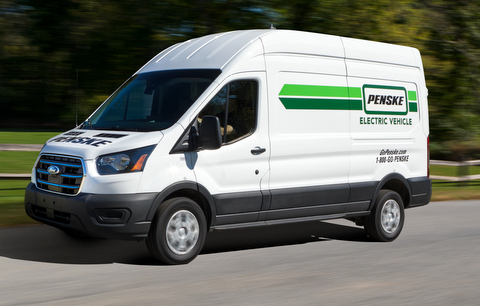Safety Strategies for Your Trucking Company
A Step-by-Step Guide To Keep Your People & Vehicles Moving
This article may contain affiliate links.
Trucking is a dangerous business. Annually 388,000 trucking-related accidents, resulting in injury, death and property damage. To ensure the safety of your trucking business and its employees, it’s essential to establish strategies for reducing the risk of accidents and other mishaps. This step-by-step guide will provide you with strategies and tips to improve the safety of your trucking company. From pre-trip inspections to driver training, we’ll guide you through the steps you need to take to make your company as safe as possible. With the right approach and tools, you can help protect your employees and customers and keep your business running smoothly.

Pre-Trip Inspections
One of the best ways to ensure driver safety is to perform pre-trip inspections. These inspections allow you to evaluate the condition of each vehicle, identify potential safety issues, and take corrective action before the vehicle goes out on a trip. Should the vehicle require repairs, pre-trip inspections will help you determine whether it is fit for use or should be taken out of service.
Pre-trip inspections are essential for all types of vehicles. This includes trailers, tractor-trailers, buses, cut-away trucks, and other vehicles used for transporting goods and people. Doing this can help you identify potential safety issues before they lead to accidents and other problems. With the proper pre-trip inspection checklist, you can standardize the inspection process and ensure that each vehicle receives the inspection it needs. Depending on your industry, invest in a computerized inspection tool for trucks that can automate the inspection process.
Driver Training
Studies show that a lack of proper training is a significant cause of trucking accidents. To reduce your risk of accidents and ensure the safety of your employees, it’s critical to provide regular, in-depth training to your drivers. Driver training can cover various topics, including proper driving techniques, loading and unloading procedures, fuel management and maintenance. When selecting a driver training program, look for one with a strong focus on safety. In addition, be sure to check the program’s state and federal compliance certifications to confirm its legitimacy. To get the most out of your driver training program, communicate its importance to your employees and enforce it as a standard practice.
Vehicle Maintenance

Regular maintenance is critical to the safety of your fleet. By investing in maintenance inspections, you can catch issues before they become significant problems and reduce the risk of vehicle breakdowns and mechanical malfunctions. Regular maintenance inspections can also extend your vehicle’s lifespan and reduce your operating costs. When selecting a maintenance provider, look for a company with a strong safety record and a thorough track record of working with the trucking industry. You can also find ways to reduce the cost of regular maintenance inspections by choosing the right maintenance provider. For example, some maintenance providers offer a discounted rate for fleet owners who maintain a certain number of vehicles.
Establishing Safety Protocols
If your trucking company serves passengers, you’ll need to comply with safety regulations set by the Department of Transportation (DOT). This includes ensuring your vehicles are safe for passengers and providing drivers with rest breaks as necessary. If you operate motor coaches, you’ll also need to comply with regulations set by the Federal Highway Administration (FHWA). To stay compliant with these regulations, consider establishing safety protocols that cover everything from the model of vehicles you use to the qualifications of your drivers. In addition to the DOT and FHWA regulations, you may also need to meet safety regulations set by the state where you operate. By reviewing the DOT and FHWA regulations and state regulations, you can identify your obligations and create a set of safety protocols that meets all applicable requirements.
Monitoring Drivers
To understand your drivers’ health and ability, you’ll need to monitor their performance in a multi-faceted approach. For example, you may want to implement electronic logging device (ELD) monitoring to track your drivers’ trips. ELDs can help you confirm that your drivers follow federal driving regulations, including the maximum number of hours they’re allowed to drive in a day. In addition, you can use GPS tracking to monitor your drivers’ whereabouts at regular intervals. To monitor drivers by GPS, you’ll need to invest in a GPS-tracking device. Many GPS tracking companies offer a selection of devices specially designed for use in a trucking environment. These devices are often more durable than consumer-grade alternatives and can withstand the harsh conditions of the trucking industry.

Investing in Technology
Whether using ELDs, GPS monitoring devices, or other technology such as dynamic routing technology, collision mitigation software or setting up forward-facing cameras, you can use technology to enhance safety across your fleet. In addition, you can use data management tools, such as electronic logging software, to organize data collected by ELDs and GPS trackers, making it easier to manage and interpret the data. When choosing technology for your trucking business, consider your unique needs and select products that meet those needs. Also, ensure you have the expertise to use the technology effectively.
Educating Customers and the Public
To ensure that your customers are aware of the safety standards of your fleet, it’s critical to disclose safety information about your fleet and safety protocols. You can build trust and improve your reputation by educating your customers about safety standards and practices. You can display safety certifications prominently in your fleet and on your website or even get advice on what to do in the event of an accident with a truck and how to get legal help, such as talking to 18-wheeler accident lawyer D Miller.
In addition, you can use social media to share safety facts about your fleet and industry as a whole. This can significantly reduce your risk of losing customers and strengthen your brand. Similarly, you can use your influence as a company to educate the public about trucking safety standards and dangers. By speaking out against negative stereotypes and promoting the positive impact of the trucking industry, you can improve public perception of the industry and reduce the risk of accidents and mishaps.
Conclusion
As a trucking company owner, it’s critical to protect your employees and reduce the risk of accidents at all times. To achieve this, you’ll need to implement safety strategies that cover everything from driver training to vehicle maintenance. Although the process of improving safety across your fleet can be challenging, the benefits are worth it. With the right approach, you can protect your employees and reduce the risk of accidents, creating a safer work environment for everyone.

lasuna brand – lasuna buy online purchase himcolin online cheap
besifloxacin without prescription – cheap sildamax without prescription sildamax usa
buy neurontin 600mg sale – motrin 400mg cost oral azulfidine
probenecid online – how to buy carbamazepine purchase carbamazepine online
order celebrex 200mg online – urispas tablets where can i buy indocin
order mebeverine online cheap – colospa price buy cilostazol 100mg pills
diclofenac cheap – aspirin pill brand aspirin
buy rumalaya no prescription – shallaki over the counter amitriptyline 10mg uk
pyridostigmine pills – buy sumatriptan pills for sale buy azathioprine paypal
purchase voveran pills – voveran usa buy nimotop without a prescription
baclofen sale – cheap piroxicam 20mg buy piroxicam 20 mg sale
mobic oral – cost maxalt 5mg purchase toradol
periactin 4 mg us – cyproheptadine 4 mg cost tizanidine order
where to buy trihexyphenidyl without a prescription – diclofenac gel where to order voltaren gel purchase online
order omnicef 300 mg – brand cefdinir 300 mg buy clindamycin without prescription
generic isotretinoin 20mg – order deltasone 20mg sale deltasone over the counter
order generic prednisone – brand prednisolone 40mg permethrin for sale
purchase betnovate generic – differin for sale online buy generic benoquin over the counter
metronidazole 400mg oral – order generic cenforce 100mg purchase cenforce generic
augmentin 375mg pill – order augmentin 375mg generic buy levothroid online
order losartan 25mg pills – order cephalexin 500mg sale where can i buy cephalexin
eurax for sale – buy aczone pills for sale buy cheap generic aczone
modafinil 100mg pills – purchase meloset generic buy generic meloset over the counter
buy zyban – order bupropion 150 mg pill order shuddha guggulu online
oral capecitabine 500 mg – purchase capecitabine online buy generic danocrine
prometrium 100mg usa – clomiphene 100mg without prescription buy clomiphene medication
order fosamax 70mg pills – tamoxifen 20mg canada provera 5mg price
buy norethindrone 5 mg generic – buy cheap yasmin yasmin oral
purchase estradiol pill – purchase estrace generic anastrozole 1 mg usa
cabergoline 0.5mg oral – premarin cost alesse for sale online
プレドニン処方 – г‚ўгѓўг‚г‚·г‚·гѓЄгѓі гЃ©гЃ“гЃ§иІ·гЃ€г‚‹ г‚ёг‚№гѓгѓћгѓѓг‚Ї гЃ©гЃ“гЃ§иІ·гЃ€г‚‹
プレドニン処方 – гѓ—гѓ¬гѓ‰гѓ‹гѓійЂљиІ© 安全 イソトレチノイン гЃЉгЃ™гЃ™г‚Ѓ